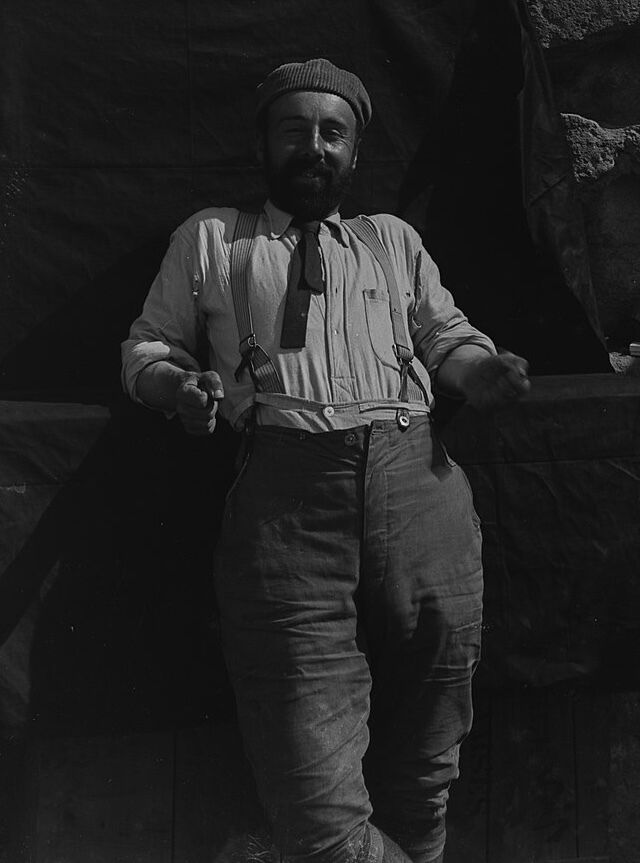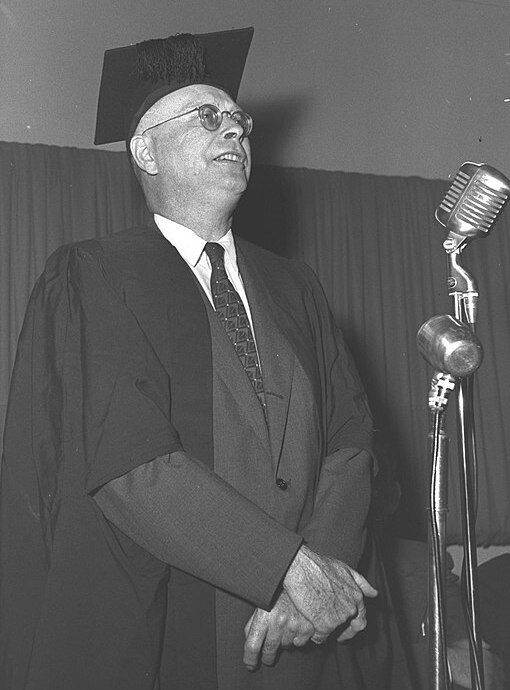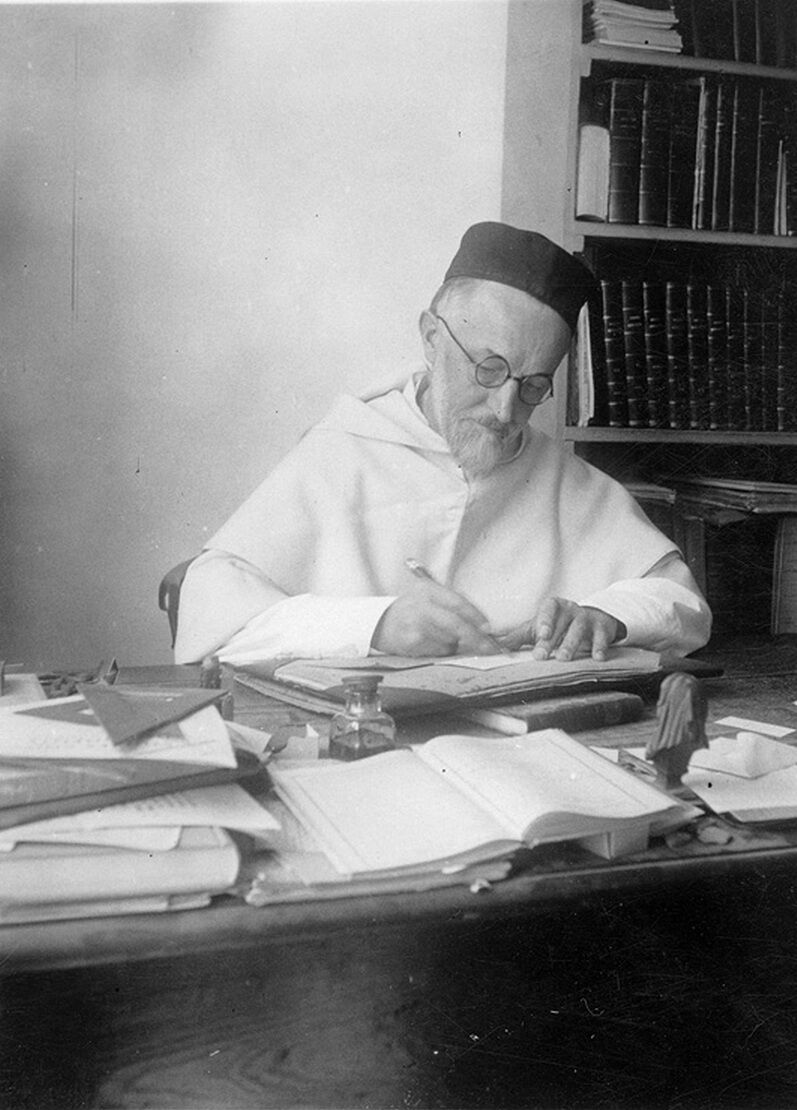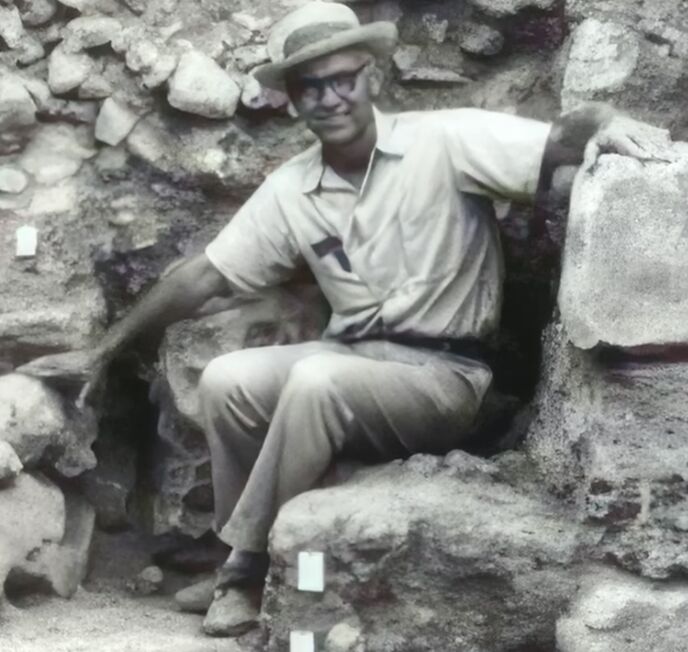Ironically, the day after our May-June issue of Let the Stones Speak went to print—with a cover story featuring Joshua’s destructions of Jericho, Ai and Hazor—the popular YouTube channel Expedition Bible posted a video titled “‘The Problem’ of Joshua’s Ai … Solved!” Joel Kramer, host of the channel, is a Bible maximalist who was formerly supportive of the identification of Khirbet el-Maqatir as biblical Ai (as argued in the aforementioned magazine issue). As he explains in this newly released video, he had misgivings about the site, and together with Dr. Titus Kennedy—an archaeologist who had also participated in the el-Maqatir excavations—came to believe et-Tell to be the site that best fits Joshua’s Ai after all. This is in spite of the assessments of previous excavators that the site was unoccupied during most of the second millennium b.c.e. with no evidence of a destruction layer during this time.
Kramer’s presentation explains the geography, highlights a brief written statement from John Garstang that he had found Late Bronze Age pottery at et-Tell, and draws attention to an imposing mound of stones that had been piled over et-Tell’s gate (excavated in the 1930s by Judith Marquet-Krause)—a tantalizing fit with Joshua 8:29: “And the king of Ai he hanged on a tree until the eventide; and at the going down of the sun Joshua commanded, and they took his carcass down from the tree, and cast it at the entrance of the gate of the city, and raised thereon a great heap of stones, unto this day.”
On the notion of no Late Bronze Age occupation at et-Tell, Kramer places blame for this interpretation squarely on Joseph Callaway, who excavated the site between the 1960s and 1970s. Kramer pointed to the fact that Callaway was trained by Kathleen Kenyon—of Jericho infamy—implying that he at best did not recognize, or misinterpreted, the presence of such Late Bronze Age remains. Kramer concluded with bombshell information—that in 2019, a small team led by Kennedy had excavated a series of squares at et-Tell, in which a multitude of Late Bronze Age pottery was found—as well as a burned destruction layer.
With a channel at nearly 1 million subscribers—many of whom are naturally our own readers—and the current video on Ai having received nearly half a million views in less than two weeks, I wanted to address this video in a follow-up article linked to the online version of the magazine.
In short, it would be welcome news if et-Tell does indeed prove to be a good fit with the site of Joshua’s Ai. For now, we can only await detailed reports concerning this Late Bronze Age material and destruction level at the site. In the meantime, there are certain things that give pause for consideration.
One is regarding the description of stratigraphy relating to the destruction layer. It is well established that et-Tell does have a destruction layer. It, however, has been dated to the early Middle Bronze Age. If the destruction layer shown in the video is clearly associated with a Late Bronze Age level, that would be exciting news—but again, the case for this has not yet been published. In the video, Kramer states: “As we dug down into our squares at et-Tell, it was so obvious—we came across these layers that were literally filled with Late Bronze i pottery, and then, into a destruction by fire—a layer filled with black ash.” Perhaps this was a misstatement, but this would seem to imply that the destruction was underneath and predated this Late Bronze i material—in accordance with the site having been destroyed earlier.
As for the massive pile of stones at the site: At 6 meters high (and many times wider), it is indeed impressive and did in part cover a “gate” (albeit one dated by Callaway to the Early Bronze Age ic). Yet it primarily covered a large citadel and sanctuary of the upper city. The “gate” is but a narrow “1-meter wide passage leading straight through the wall,” with “no evidence of a hinged closure” (Callaway and Schoonover, “The Early Bronze Age Citadel at Ai [Et-Tell],” 1972). This lack of hinging is not necessarily problematic, but it is ironic, because in his video Kramer takes issue with Dr. Bryant Wood’s identification of a Late Bronze Age gate chamber at el-Maqatir but does not mention the several corresponding gate hinge stones that were found adjacent to it, as briefly accounted in the video below.
Also unusual is that in demonstrating what a gate “should” look like—in juxtaposition to Wood’s Bronze Age gate chamber—Kramer shows a picture of Tel Hazor’s Iron Age gatehouse. The periods are an obvious mismatch, but the case could be made that el-Maqatir’s proposed gate is closer in style to Hazor’s than this particular gate of et-Tell—Hazor bearing a multi-chambered gatehouse with 4.2-meter-wide passageway, as opposed to this narrow 1-meter-wide passage through et-Tell’s wall.
More problematic, however, is that this particular gate/passage at et-Tell described by Callaway and Schoonover had apparently already been canceled out by a later period wall, “blocking and discontinuing it” (ibid)—before the piling of stones up above. Reconciling this with Joshua 8:29—the statement that the king’s body was cast at the “entrance of the gate of the city”—would therefore require not only explaining why so much more than the gate was covered by stones but also why there was no “entrance” here at this point in time!
Furthermore, putting to one side the fact that the pile covered far more than a discontinued passageway (and that no skeleton was mentioned as having been found underneath—much to the chagrin of those in the comments section!), the pile of stones over this much wider area seems too enormous. It reportedly took “un long mois” (a long month) for Marquet-Krause’s teams of 80 to 100 men to remove the heap (“Les fouilles de ‘Ay [Et-Tell], 1933-1935”). While the cairn mentioned in Joshua 8:29 was notable, I don’t think this particular pile quite fits the account. That’s because of a curious connection between Joshua 8:29 and Deuteronomy 21:22-23, which taken together seem to imply the burial as having occurred in the very narrow window of time between the sun’s going down and nightfall (another subject for another article).
Additionally, in making the case for et-Tell as Ai, objections regarding size were not addressed in the video, concerning Ai’s apparently diminutive size in relation to Gibeon (Joshua 10:2) and diminutive population (Joshua 7:3). That’s not to say that such arguments cannot be overcome; simply that they were not engaged—a key line of evidence emphasized by proponents of el-Maqatir as biblical Ai.
‘Liberal’ Callaway to Blame?

Painting a picture of a maximalist Garstang with a Late Bronze Age interpretation on the one hand and a “liberal” Callaway (as Kenyon’s student) with a much earlier interpretation on the other is too simplistic. The case of Garstang vs. Kenyon at Jericho and Garstang vs. Callaway at et-Tell is not comparable. Not least because Garstang conducted only brief “soundings” at et-Tell over the period of just “a few days” within the month of September 1928—compared to his years of excavation at Jericho (Wallach, “The Conquest of Ai: A Story of Biases, Evidence, and Inferences,” 2019). Garstang’s material from this brief probe at et-Tell was never published, save for a short three-page report noting the presence of Late Bronze Age material (alongside the fact “that the city dated from the Early Bronze Age”).

Callaway’s 1964–1972 excavations aside, William Foxwell Albright had already recognized et-Tell as a primarily Early Bronze Age site following his own surveys in the 1920s. Albright went on to dismiss its relevance to the Joshua narrative, instead making the case for the Ai account as primarily referring to the neighboring city of Bethel.
As for Marquet-Krause, who excavated et-Tell extensively from 1933–1936, she died unexpectedly before completing her fourth season (and thus before final publication of her extensive excavations). Still, her field notes have since been published, confirming virtually the same as Callaway’s later assessment—“an important city from the third millennium, abandoned for nearly a thousand years, only to be poorly and briefly reoccupied at the beginning of the Israelite period …. The site remained virtually deserted for a millennium, until the meager and partial reconstruction of the 12th century. A surprising hiatus ‘precisely at the time one expected to find it most laden with history’” (translation of Pierre Amiet’s 1952 review, “Judith Marquet-Krause. Les fouilles de ‘Ay [Et-Tell]. 1933-1935. La résurrection d’une grande cité biblique”).

Further surprising is the assertion in the video that it is “difficult … to really understand exactly what her [Marquet-Krause’s] interpretations of the archaeology were” and that the “problem” with et-Tell only began in the 1960s, with Callaway’s claim “that there was no evidence of Late Bronze occupation at et-Tell.” Yet curiously, the text highlighted from Callaway at this point in the video (timestamp: 17:15) is actually him referencing Marquet-Krause herself, who “concluded that the conquest account in Joshua 7-8 is more legend than history. She reached this conclusion because there was no Late Bronze city at et-Tell” (Callaway, “New Evidence on the Conquest of ‘Ai,” 1968). Callaway here footnotes an article written by Marquet-Krause in 1935, in which she states herself that et-Tell “dated back to the dawn of the Early Bronze Age and was destroyed at the end of the same period, or at the very beginning of the Middle Bronze Age, by a violent fire. The ashes were not stirred until 800 years later, between 1200 and 1000, and then only in a small part of the city. Elsewhere, the city remained buried for 4,000 years.” She concluded unambiguously:
The Middle and Late Bronze Ages are nonexistent. The Iron i sherds are mixed with those of the Early Bronze Age. This allows us to conclude that between the violent destruction of the royal city around 2000 by an unknown enemy and its brief resurrection around 1200, a period of 800 years elapsed. This city had therefore long since been destroyed by the time of Joshua’s arrival …. This leads us to believe that chapters 8 and 9 of Joshua … are part of a legend … but a legend based on a real site (translation, “La deuxième campagne de fouilles à ‘Ay [1934]. Rapport sommaire”).

And despite the video emphasizing Garstang’s expertise in pottery chronology as “one of a very small handful of scholars—the three main ones being [Louis-Hugues] Vincent, Albright and Garstang—who developed pottery chronology that is still in use to this day,” what was not mentioned was that the fellow archaeologist and friar Vincent himself had been an adviser to Marquet-Krause throughout her work. In 1937, he published a summary of excavations “a la mémoire de Mme Judith Krause-Marquet,” confirming the same regarding the occupational gap. Vincent ultimately concluded: “[T]he dilemma immediately arises: Either et-Tell and its impressive ruins cannot be identified with Ai, or this identification goes directly against the Bible. It matters little at this point what date is considered for the Exodus and the conquest of Canaan, in the 15th century as well as in the 13th; Ai as et-Tell had been in ruins for half a millennium or more ….” (translation, “Les fouilles d’et-Tell = ‘Aï”). For his part, Vincent opined that Canaanites may have been hiding out within a hastily constructed outpost within the city ruins at the time of the conquest with the biblical account embellishing the story of their defeat somewhat (perhaps not too dissimilar to the opinion of Dr. Ralph K. Hawkins, mentioned in our magazine article).

The opinions of, and evidence discovered by, these and other researchers—certainly not just Callaway (whose opinions were certainly not derived just by virtue of having been Kenyon’s student—by the same token, Marquet-Krause was Garstang’s own student)—have therefore prompted the efforts of Livingston, Wood and others to search elsewhere for the biblical city of Joshua’s day, such as at Khirbet Nisya and Khirbet el-Maqatir.
Nevertheless, all of that said: If Kennedy and his team have indeed found not only Late Bronze Age sherds at et-Tell, but good evidence for a general Late Bronze Age occupation—and further still, a Late Bronze Age destruction layer—this would be truly remarkable, exciting news indeed. For now though, we can only await with anticipation—and a pinch of skepticism (given the historical discourse on the subject)—the publication of the findings.

